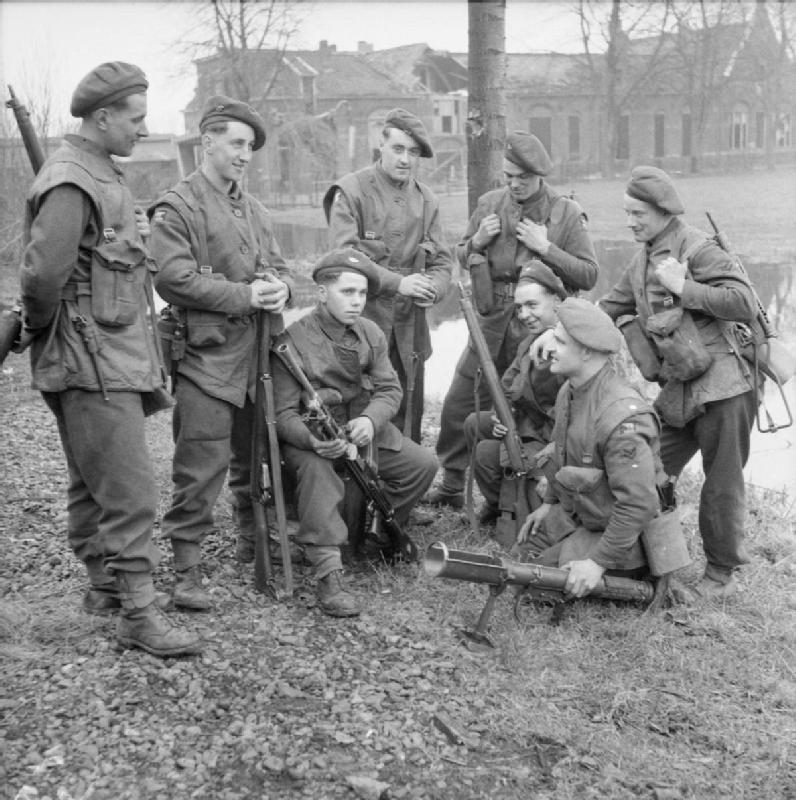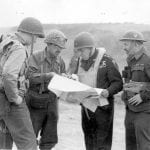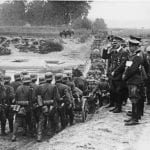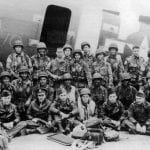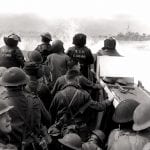The following article on British Army Divisions in World War Two is an excerpt from Barrett Tillman’ D-Day Encyclopedia. It is available for order now from Amazon and Barnes & Noble.
The overriding concern of the British army in 1944 was manpower. After four years of war and enormous drain not only on the nation but upon the Commonwealth, it was increasingly difficult to maintain an adequate pool of able-bodied men. Consequently, the British armed forces, and especially the army, needed to keep casualties as low as possible. It was a difficult situation, especially in the face of determined, highly capable German opposition. The ability and willingness of the Americans to absorb losses probably was the major difference between the two greatest Western Allied powers.
In 1944 the nominal strength of a British infantry division (seldom achieved) was 18,347 men, including officers. It compared in size to the standard U.S. Army division but had less transport.
The British division also differed in its organizational structure. Despite three centuries of institutional continuity in some regiments, very few regimental units fought as such. Rather, independent or quasi-independent battalions from different regiments were brought together to form the equivalent of an American regiment. Many British regiments had only one or two battalions, while some had as many as eight or more flung across the globe. The deficit was in some ways made up with a standard organization of four companies per battalion rather than the Americans’ three. With attached supporting arms, British brigades more closely resembled American regimental combat teams, with organic armor and artillery battalions.
The main British units committed to the 6 June landings were:
British Army Divisions: Third Infantry Division
.jpg)
Sword Beach, Maj. Gen. T. G. Rennie. In addition to the division’s three composite brigades, the Twenty-seventh Armoured Brigade was attached.
• Eighth Brigade: Brig. E. E. Cass.
• Ninth Brigade: Brig. J. C. Cuningham.
• 185th Brigade: Brig. K. P. Smith.
• Twenty-seventh Armoured Brigade: Brig. G. E. Prior-Palmer.
British Army Divisions: Sixth Airborne Division
Commanded by Maj. Gen. Richard Gale. The division included the Third and Fifth Parachute Brigades and Sixth Airlanding Brigade, each with three battalions. The Third Parachute Brigade included the First Canadian Parachute Battalion. The airlanding brigade comprised one battalion each of the Devonshire, Oxford, and Buckinghamshire Light Infantry, and Royal Ulster Rifles.
• Glider Pilot Regiment: Brig. George Chatterton.
• Third Parachute Brigade: Brig. James Hill.
• Fifth Parachute Brigade: Brig. Nigel Poett.
• Sixth Airlanding Brigade: Brig. the Hon. Hugh Kindersley.
Fiftieth (Northumberland) Infantry Division
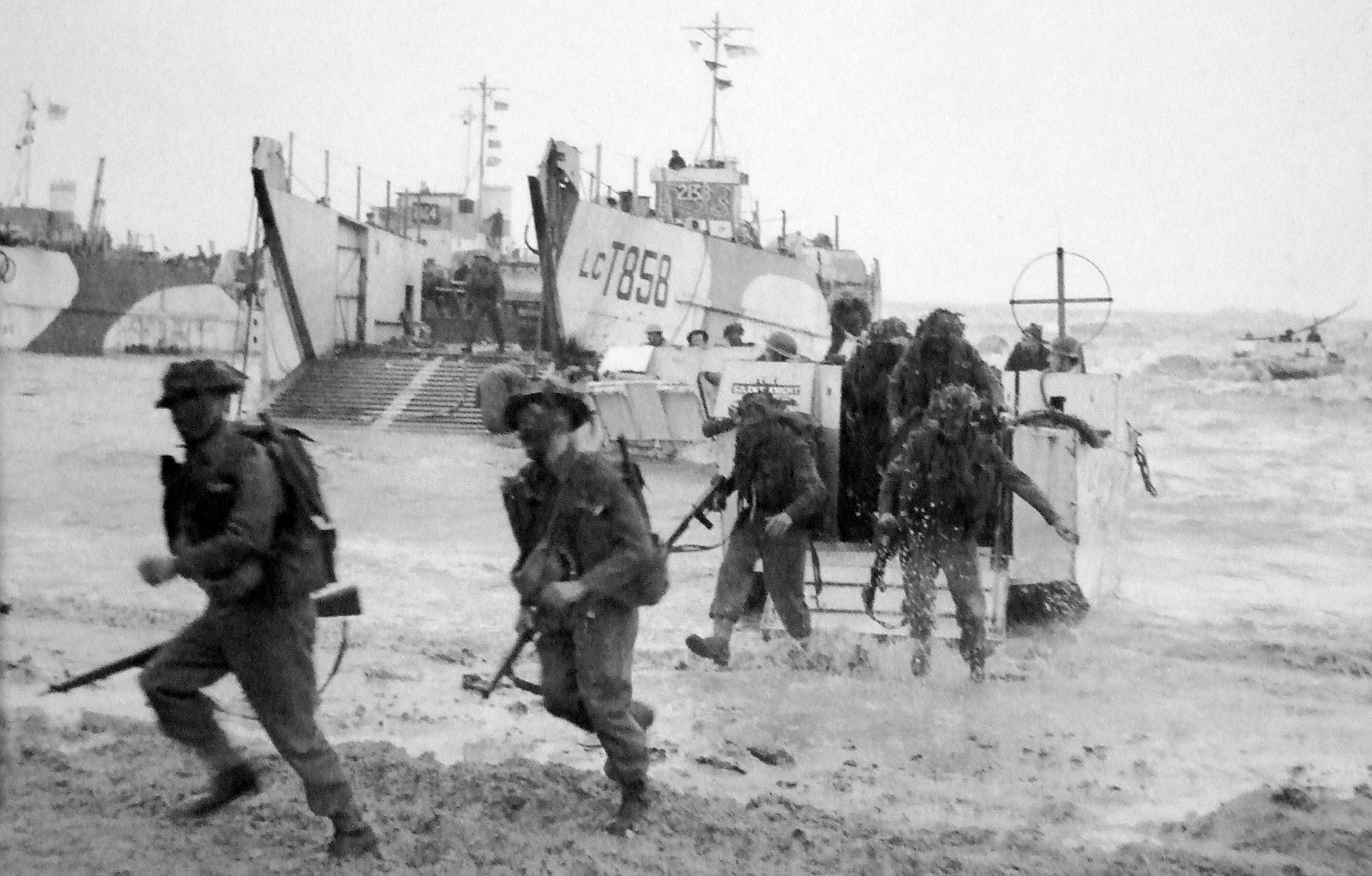
Gold Beach, Maj. Gen. D. A. H. Graham. During the Normandy campaign the 151st Brigade (three battalions of the Durham Light Infantry) sustained particularly notable casualties including two commanders in barely two weeks. Brigadier R. H. Senior was wounded on D-Day and Brigadier B. B. Walton on 16 June.
• Sixty-ninth Brigade: Brig. F. Y. C. Cox.
• 151st Brigade: Brig. R. H. Senior, B. B. Walton.
• 231st Brigade: Brig. A. G. B. Stanier Bart.
• Eighth Armoured Brigade: Brig. Bernard Cracroft.
British Army Divisions: Seventy-Ninth Armoured Division
Maj. Gen. Sir Percy C. S. Hobart commanded the primary British tank force in Normandy. His division was composed of the First Tank Brigade, Thirtieth Armoured Brigade, and First Assault Brigade, composed of Royal Engineer units. The First Canadian Armoured Personnel Carrier Regiment was attached.
Independent brigades of Thirty-first Army Group included Fourth Armoured, Sixth Guards Tank, Eighth Armoured, Thirty-first Tank, Thirtythird Armoured, Thirty-fourth Tank, Fifty-sixth Infantry Brigade, First and Second Special Service Brigade, and Second Canadian Armoured.
British Army Divisions: First Special Service (Commando) Brigade
Commanded by the charismatic Brigadier Simon Fraser, Lord Lovat, the First Special Service Brigade was formed specifically for the Normandy landings. Its components were Nos. 3, 4, and 6 Commandos of the British army, No. 45 Royal Marine Commando, and part of No. 10 Interallied Commando, mainly comprised of Free French troops. The brigade’s total strength amounted to some 2,500 men.
Landing on Sword Beach, Lovat’s forces advanced through lines held by the Third Division’s Eighth Brigade. The commandos’ main objective was relief of the British Sixth Airborne Division, which had seized vital bridges over the Orne River.
On 7 June Lovat’s marines attacked east of the Orne Estuary, while No. 3 Commando assaulted the Merville Battery of coastal defense guns. Both efforts were repulsed, but the brigade ceded little ground to determined counterattacks. Repeated thrusts were made by German armor, including the Twenty-First Panzer Division. The commandos seized Breville on D+6, and though Lovat was badly wounded, the eastern flank of the landing beaches had been secured.
The brigade was withdrawn after ten weeks in combat, sustaining nearly a thousand casualties.
 |
 |
 |
This article on British Army Divisions is from the book D-Day Encyclopedia, © 2014 by Barrett Tillman. Please use this data for any reference citations. To order this book, please visit its online sales page at Amazon or Barnes & Noble.
You can also buy the book by clicking on the buttons to the left.
This article is part of our larger resource on the WW2 Armies warfare. Click here for our comprehensive article on the WW2 Armies.
Additional Resources About WW2 Armies
Cite This Article
"British Army Divisions: D-Day and Beyond" History on the Net© 2000-2024, Salem Media.
July 27, 2024 <https://www.historyonthenet.com/british-army-divisions>
More Citation Information.



